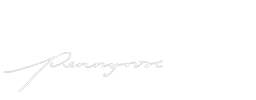In this series of work I have painted various birds from New Zealand and Australia onto boards and found objects. My art practice is driven by the mythical origins of birds and their migration and how we imbue them with a spiritual and cultural dimension, as opposed to the reality of their existence.
In some of the paintings I focus on the fragility and vulnerability of a native species that is now extinct due to over hunting and the destruction of its environment. I want to create worlds where all birds, extinct and alive, exist in a realm of transition.
The painting titled Kaitiaki O He Waahi Tapu (Guardians of a Sacred place) studies and paintings exhibited here together. For me it was the breakthrough piece. Previously I had been painting still life’s and bird skulls, I feel this painting has taken me on a new path which I want to explore more.
Kaitiaki O He Waahi apu features birds from New Zealand and Australia, birds that travel between the countries or further afield.
Kaitiaki O He Waahi Tapu portrays the vast nocturnal spaces where the extinct and endangered species emerging from the dark and coming into the living world of light. In Maori mythology birds are seen as guardians and are a link between the spiritual and the living world.
The Kotuku (White Heron) is seen travelling towards the light, another realm beyond, it is the messenger from the living to the spiritual world. There are floating ledges, where bids are perched, some teetering on the verge of existence, or shelves displaying remnants of birds as a reference to museum displays. I am trying to preserve the knowledge of the native birds by portraying a mythic world or fantasy where both living and extinct birds exist together, a memory.
I painted the bonnet at the height of the Darwin wet season. I enjoyed placing the Northern Territory birds into the wet season cloudscape, taking into consideration their behavior and how they interact together wet season clouds are a typical backdrop for Darwin: they look like ice cream melting with the heat. The colour palette of the bonnet to begin with was very Darwin—full of mould, rust and dirt—it was the perfect medium to start forming the clouds. The scrape marks looked like rain. The old bonnet is a reference to travel, it is a vehicle to view the landscape and birds. The characters of the birds are shown, I often see Brahminy Kites circling high above at the beach and waterways or cruising over my swimming pool at home, the Black Cockatoo only visits in the wet and the Galah is cheekily clowning around and observing the scene below from his perch on top of the cloud.

I especially painted the Huia bird because they are regarded by Maori as tapu (sacred), and the wearing of its skin or feathers was reserved for people of high status.
They were hunted to extinction by Maori and Pakeha. The mythology of the Huia is fascinating, they have 12 tail feathers that represented for Maori the 12 levels of Hawaiki. The male and female Huia mated for life and were dependent on each other for feeding. The shape of the Huias beaks for the female and the male female Huia has a long curved beak for extracting the grubs and the
male Huia had a shorter beak to peck away at the wood and bark.
My paintings of the Huia are dark and concealing because it symbolises the emergence of the Huia from another time and world. Albino Huia have never been proven but Maori mythology has stories concerning their existence. Painting the Huias was important because they are part of my history and ancestry.
Published by Pennyrose Wiggins 2016 in Outstation catalogue.
